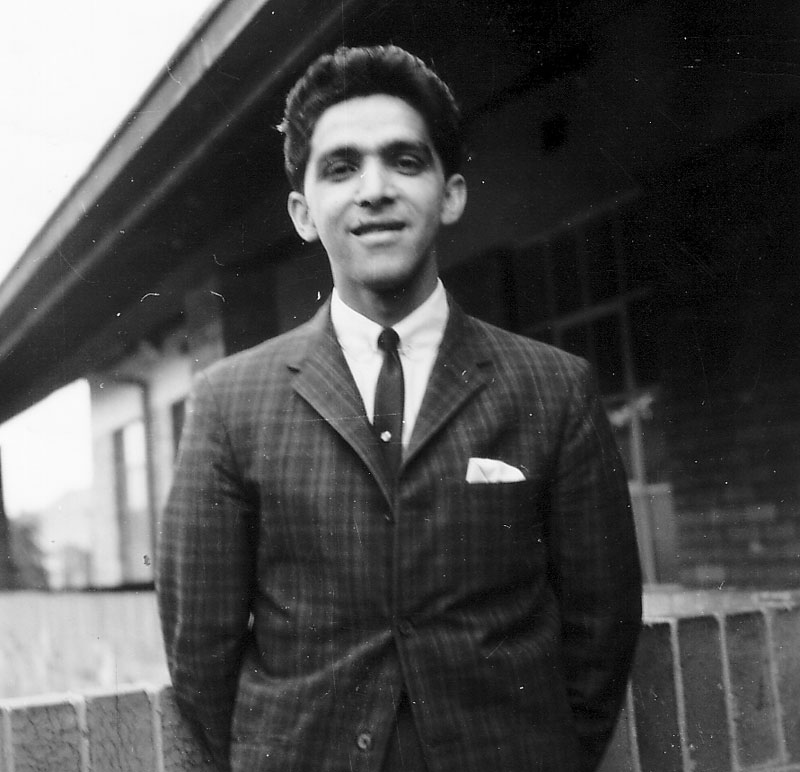The 44th anniversary of Ahmed Timol’s death in detention will be marked on Tuesday, October 27. The commemorative event will see the inquest documents into his death, officially being made available to the public. The event takes place at 10.30am at Johannesburg Central Police Station, in the very building from where “he plunged ten storeys and hit the ground”.
Timol, a teacher, South African Communist Party member and Umkhonto we Sizwe operative, died in detention at the then notorious John Vorster Square police station on October 27, 1971. While police versions of his death indicate that he committed suicide by jumping from the 10th floor, evidence suggests that Timol was severely tortured by the Special Branch, and was likely to have been killed in detention.
Some four decades later, the partial set of inquest documents kept by one the family’s legal representatives, Attorney Mia Ahmed Loonat, are being made public.
The records were handed over to the Ahmed Kathrada Foundation (AKF) and were digitised by the Wits Historical Papers Research Archive. The process of digitisation took a month.
The Foundation’s Director, Neeshan Balton, thanked Loonat for donating the documents to the AKF. He added that the records provided valuable insight into understanding the workings of the apartheid administration when dealing with deaths in detention. “These papers are of significant historical value. They not only capture the police’s account of Timol’s death, but statements from his parents, letters, and even copies of the ‘illegal’ pamphlets found in his car, at a roadblock just before his arrest. While the documents are ‘treasure trove’ of information for history enthusiasts, they also remind us of the invaluable role that activists like Timol, and others who were killed in detention, played in our liberation struggle.”
Michele Pickover, from Wits Historical Papers, echoed similar sentiments. “Our role in making the brutal South African apartheid past publically and globally accessible online – through the process of digitisation – has been a privilege. It is important to ensure that the Timol Inquest is preserved and accessible to all South Africans, particularly given our fragile democracy.”
At the forefront of preserving Timol’s legacy, is his nephew, Imtiaz Ahmed Cajee. Cajee, who already wrote his first book, Timol, A Quest for Justice, has started his second. He says that the second edition will deal with the “elusive truth”.
Although only 5 years old when his uncle was detained, Cajee was affected by his grandmother, Hawa Timol’s testimony, and believes that the second book will bring some sort of closure for him personally. He has also spearheaded an exhibition on Timol’s life currently running at the Apartheid Museum, and a documentary, entitled Indians Can’t Fly.
“The inquest documents have been an important source of information in piecing together the period during and directly after my uncle’s arrest and death. It takes us one step closer to understanding what really happened on the 10th floor on October 27, 1971,” he said.
Cajee has indicated that he is working with the Foundation for Human Rights (FHR) exploring the possibility of re-opening the inquest. Timol’s brother, Mohammad, himself an anti-apartheid activist, also reflected on the importance of the records. “It is extremely important that these documents be made public,” he said.
“An inquest takes place when someone has died, to establish the circumstances. The well-being of a person in custody remains with the South African police. They said that they never laid a finger on Ahmed, and the unit investigating the circumstances of his death concluded that no one was responsible for it. This is despite lots of bruises on his body.
The significance of the documents is that one can study how the apartheid special branch forces and the legal system was so politicised.”
Mohammed adds that law students, who as part of their curriculum study the Timol case, would find the papers particularly interesting.
While the value of the documents today is undeniable given its age and content, was it always considered so? Attorney Loonat believes that from a legal perspective, the judgement made in favour of making the documents available to the team representing Timol’s case, was “precedent setting”.
The team constituted Advocate I.A. Maisels QC and Advocate G. Bizos, and instructing attorneys M.S.H. Cachalia and M.A. Loonat.
“Although Maisels asked the police for the records of the detention, we were told that we were not entitled to it. This was challenged and appealed at High Court,” explains Loonat. Having won the appeal, the inquest resumed.
Loonat says that the case required the “best legal brains”, as it also succeeded in restraining police from further assaulting Salim Essop, who was arrested along with Timol at the roadblock.
He also recalls the “emotional” moments surrounding the inquest. Loonat travelled to court and back with Timol’s father, whom he says was deeply “hurt”. “The wailing (by Timol’s mother) was very touching,” he says. “There was sadness; they just wanted to know the truth.”
Well aware of the importance of the inquest records, Loonat kept them filed away in a “safe place” for years, before making them available to the Foundation. He says that he took the decision after his partner, Cachalia, had passed on, and he was left as the sole “custodian of the records”.
With already some 50 years of legal practice under his belt, Loonat says that he felt that the papers should find a home, before “going astray”.






 WhatsApp us
WhatsApp us 

